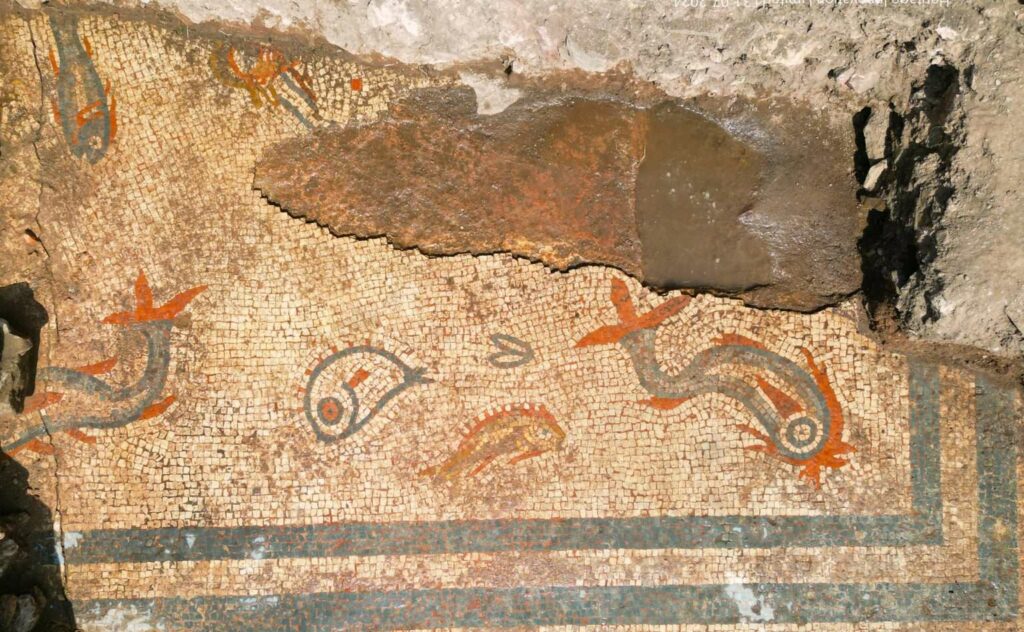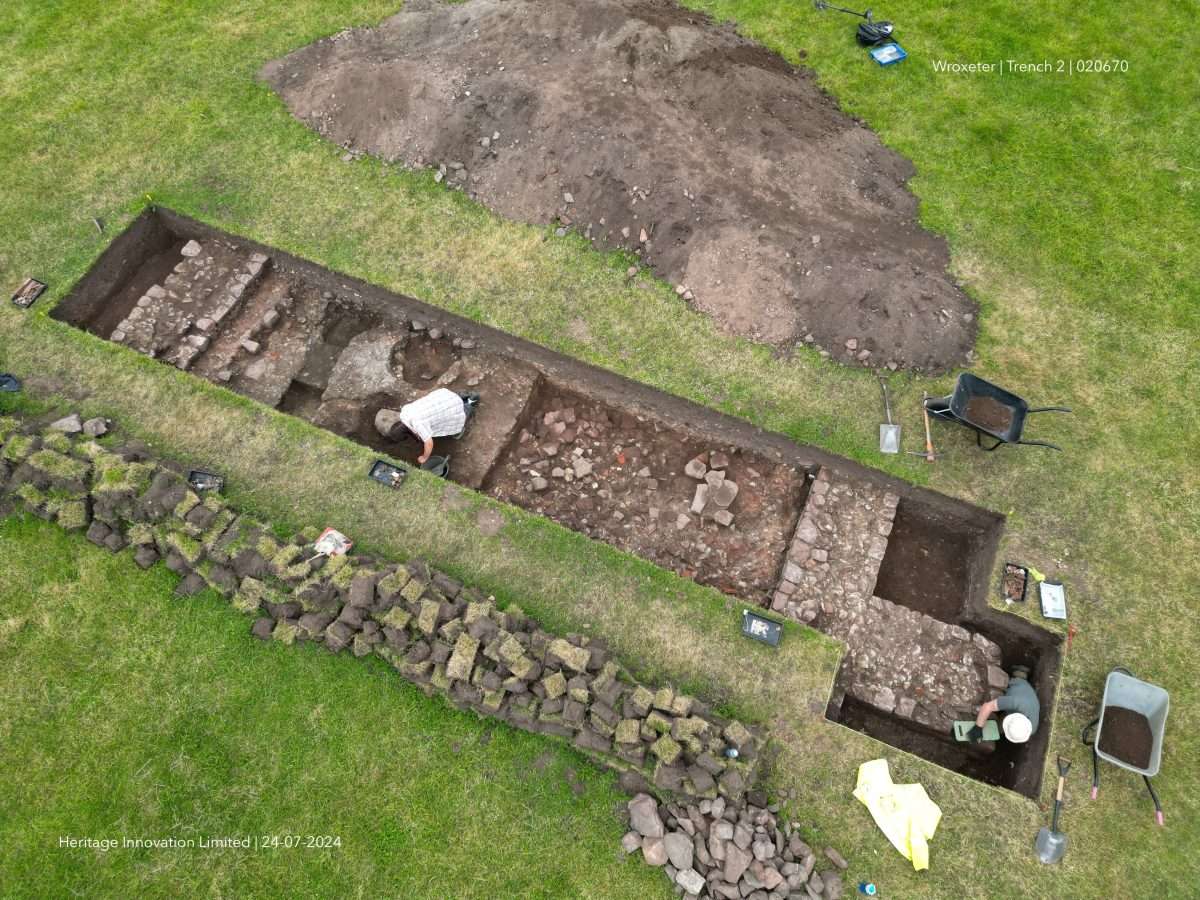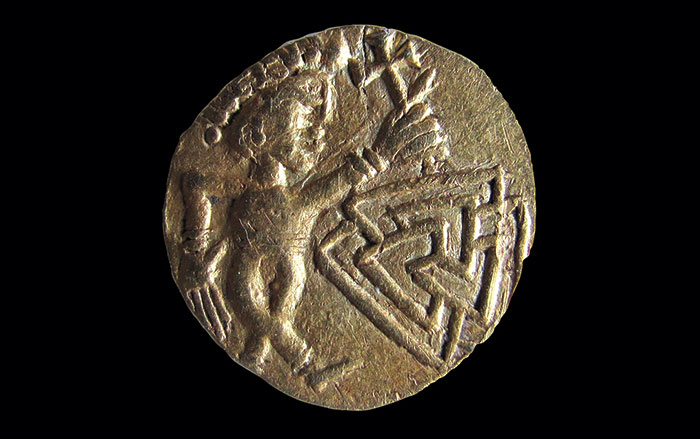
WROXETER, ENGLAND—The Shropshire Star reports that a mosaic floor dated to the early second century A.D. has been uncovered in the ancient city of Viriconium by a team of researchers from English Heritage, the University of Birmingham, Vianova Archaeology and Heritage Services, and Albion Archaeology. The team members were looking for the city’s main temple when they discovered the mosaic, which features images of dolphins and fish in bright colors. Part of a painted plaster wall also survives from the ancient room. “Although much of Wroxeter is unexcavated, geophysical surveys have helped us understand the layout of the city and we were aware that to the north of the forum there was another large civic building, almost certainly the main civic temple,” said Win Scutt of English Heritage. “This discovery, alongside a large number of small finds such as coins and pottery, will go a long way in helping us to date the various phases of the city and indicate the kinds of activities that were taking place,” he explained. The mosaic has been reburied to preserve and protect it. To read about a Roman mosaic uncovered in Wiltshire, go to "A Villa under the Garden."











